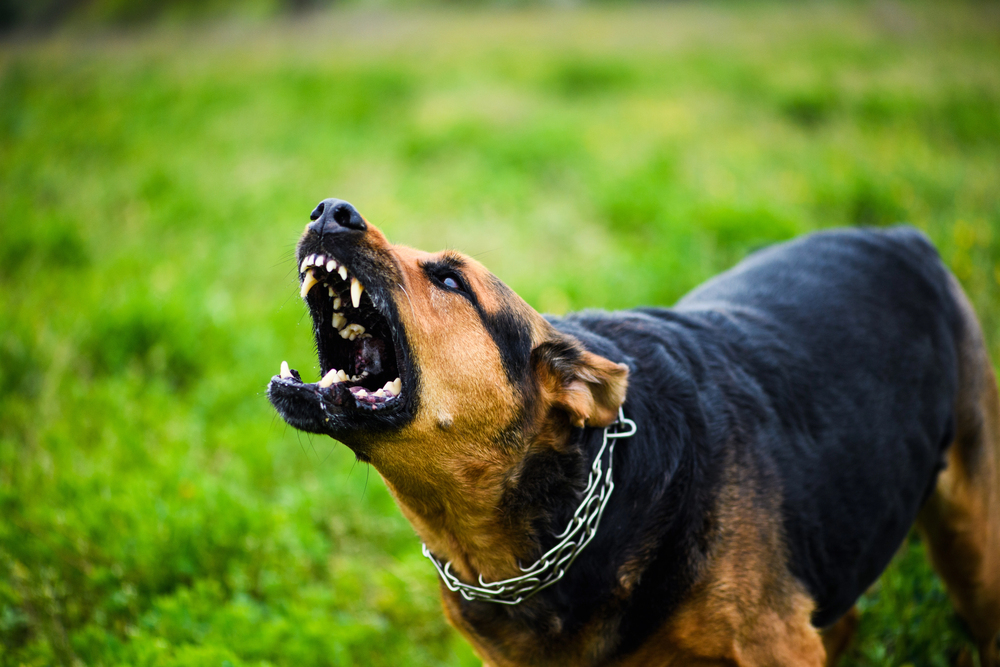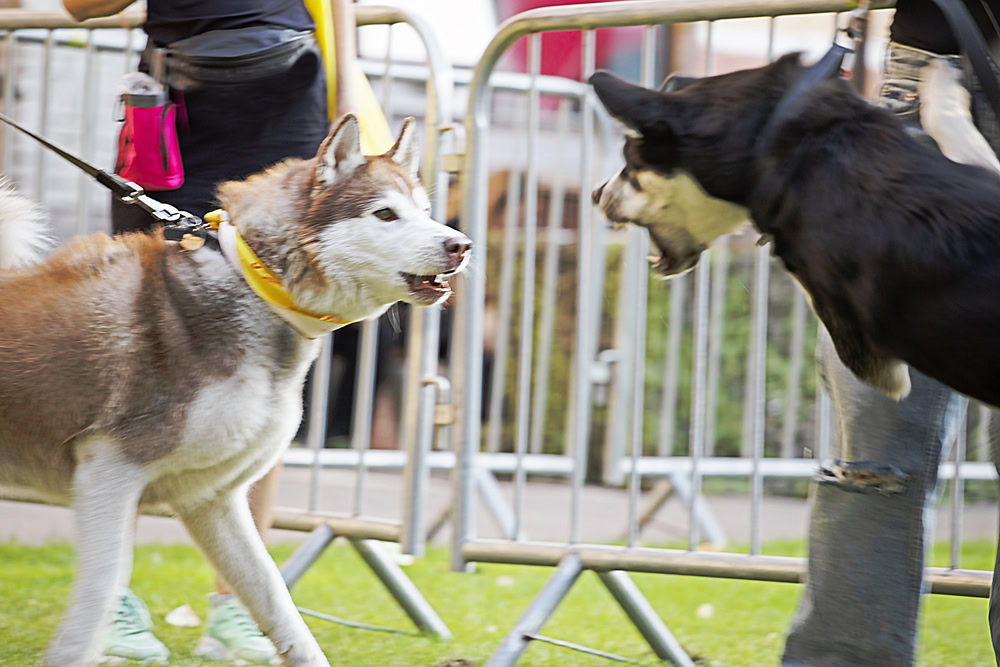
When it comes to understanding aggression in dogs, you can't afford to overlook the underlying causes and subtle warning signs. Dogs may become aggressive due to a lack of socialization, genetic factors, traumatic experiences or health reasons. Recognizing these elements is essential for effective intervention and prevention. Imagine being able to manage these behaviors before they escalate, ensuring a harmonious relationship with your best friend. Are you ready to explore strategies that can transform your approach to dog behavior?
Dog aggression encompasses behaviors that are threatening or harmful, directed towards individuals, groups, or another dog. It's essential to identify dog aggression early. Recognizing signs of aggression such as body stiffness, growling, or lunging helps you intervene before situations escalate. Canine aggression behaviors aren't just random; they're critical communication signals from your canine friend, indicating distress or discomfort.
Understanding the signs of how dogs display aggression allows you to address the root causes of an aggressive dog compassionately. By doing so, you guarantee the safety of those around you and promote a more harmonious environment. Remember, early intervention is key. Observing subtle changes in your dog's behavior, like avoiding eye contact or yawning, can prevent more severe aggression. Your proactive approach can make a significant difference.
Aggression in dogs often stems from a mix of social, genetic, and environmental factors. Understanding the common causes of aggression can help you better serve your canine companion. Inadequate socialization during puppyhood is a significant factor, leading to fear and anxiety around unfamiliar people or situations. Genetic predispositions also play a role, with some breeds naturally more inclined to aggressive behaviors due to historical roles. Early traumatic experiences like abuse or neglect can trigger fear-based aggression, making dogs defensive when they feel threatened. Additionally, lack of proper care, lack of structures, guidance or lack of training can result in frustration-elicited aggression, as dogs struggle to communicate their needs. Finally, insufficient attention from owners might lead to behavioral issues as dogs seek attention or escape boredom.
How can you tell when a dog might be feeling aggressive? Recognizing warning signals through their body language is key. Subtle behaviors like avoiding eye contact, yawning, or lip licking suggest discomfort or stress. If you notice a dog pinning its ears back, take it as a sign of unease. Growling serves as a vocal warning, indicating the dog's discomfort and acting as an essential communication tool to prevent escalation. More overt signs, such as a stiff body posture, hard staring, or lunging, show a dog feeling threatened and ready to react. By understanding these signals, you can help prevent aggressive incidents and create a safer, more supportive environment for both the dog and those around them.
When trying to understand dog aggression, it’s crucial to take into account the impact of trauma on their behavior. Trauma, especially during critical developmental periods, can lead to fear-based aggressive behaviors. Dogs learn to associate certain stimuli with negative experiences, and those who've faced neglect or abuse may develop aggressive tendencies due to heightened anxiety and mistrust. These early traumatic experiences can alter a dog’s social development, making them more reactive in unfamiliar situations or with new people.
While understanding dog behavior, it’s essential to recognize the various types of aggression they might exhibit. Knowing these can help you serve your canine companions better. Territorial aggression often surfaces when dogs defend their perceived space, especially during adolescence or adulthood. Possessive aggression arises when they guard resources like food or toys. Fear aggression, the most common type, occurs when dogs act out of fear or anxiety, escalating if warning signs are ignored. Redirected aggression happens when frustration causes them to lash out at an unintended target. Social aggression, more prevalent in males, stems from perceived high status, leading to aggressive behavior towards others. Recognizing these types of aggression helps in addressing and preventing potential issues.
Curious about what sets off aggression in dogs? Start by identifying triggers that provoke this behavior. Observe if unfamiliar people or animals, or certain noises lead to aggression. Common triggers include fear-inducing scenarios, resource guarding during meals or play, and territorial instincts against perceived intruders. Situational factors, like being on a leash, can heighten aggression due to feelings of confinement, causing leash aggression. Recognizing warning signs, such as growling or stiff posture, helps you intervene before aggression escalates. Keeping a journal of incidents can highlight patterns and specific triggers, offering insights into your dog's behavior. By understanding these triggers, you’re better equipped to serve and support your furry friend, creating a safer environment for everyone involved.
To effectively prevent aggression in dogs, start with early socialization. Expose puppies to various environments, people, and other animals to help them develop confidence and social skills. This foundation sets the stage for a well-adjusted dog. Use appropriate corrections when they are making wrong choices and reward your dog with treats, praise, or playtime when they exhibit calm and friendly behavior. Establish clear boundaries through consistent training, ensuring your dog knows what’s acceptable. Pay attention to their environment, managing potential triggers that might lead to aggressive responses. Regular veterinary check-ups rule out medical issues that could contribute to aggression. By focusing on these strategies, you're fostering a supportive, loving environment for your dog.

Although early socialization and training might seem intimidating, they're essential steps in raising a well-behaved dog. By starting early, ideally between 3 to 14 weeks, you help your puppy engage positively with various people, animals, and environments. This foundational period is vital for reducing fear-based aggression later on. Consistent training strengthens your dog's ability to handle social situations confidently. It also fosters a secure bond, creating a sense of safety and stability. Exposing your puppy to different sounds, sights, and surfaces builds adaptability, important for preventing aggressive reactions to new experiences. Remember, socialization and training aren't just initial tasks. They're lifelong commitments to maintaining a well-adjusted, non-aggressive companion who thrives in diverse settings.
Why wait to seek professional help when you notice aggressive behavior in your dog? Early intervention is vital to prevent escalation and guarantee a positive outcome. By consulting a behavior professional, you’ll gain valuable insights into identifying specific triggers and tailored management techniques. Your emotional reactions can cloud judgment, so a professional's assessment is essential for an accurate evaluation.
Ignoring warning signs like growling or lunging can lead to unpredictable and dangerous situations. Seeking professional help not only addresses the current aggressive behavior but also provides an extensive treatment plan, including behavior modification and environmental strategies. In some cases, medical interventions might be necessary. Prioritizing your dog’s well-being by seeking expert guidance serves both your pet and your community.
After seeking professional help for aggressive behavior in your dog, focusing on long-term solutions becomes the next critical step. Embrace thorough behavior modification techniques, like consistent training, desensitization, and positive reinforcement, to gradually reshape your dog's behavior. Implement effective management techniques by avoiding known triggers and creating safe spaces to reduce aggressive incidents. Regularly monitor your dog's behavior and maintain a journal to identify patterns and refine your approach.
Engage in ongoing socialization, exposing your dog to various stimuli in a controlled manner to build confidence and decrease fear-related aggression. Collaborate with qualified behavior professionals to tailor treatment plans to your dog's unique needs. This compassionate commitment guarantees successful long-term management, enhancing your dog's well-being and your peace of mind.